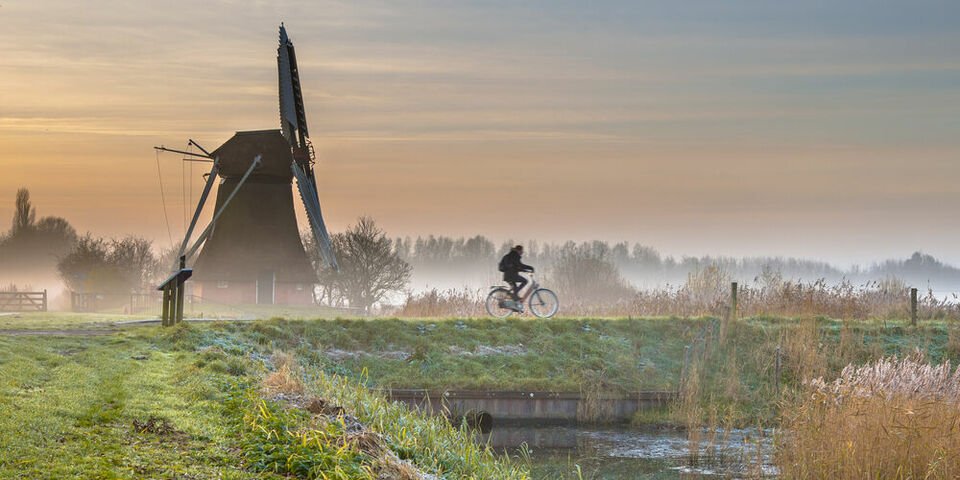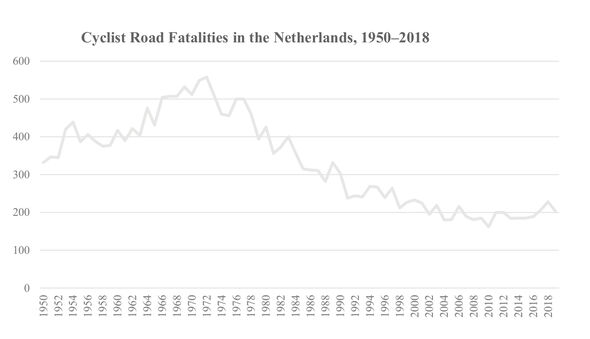The Netherlands became a cycling nation thanks to the polder model
The Netherlands has been a cycling nation for over a century. In neighboring countries, bicycles had to give way to cars, but that was much less the case in the low countries, despite the fact that the debate about who is responsible for our nation’s cycling policy has also been going on for more than a century. Historian Henk-Jan Dekker examined the matter in a dissertation, which has now become publicly available.
With thirty-seven thousand kilometers of bicycle paths and more bicycles than people, it’s fair to say that the Netherlands is a true cycling nation. It’s the result of a decades-long Dutch tradition of consensus decision-making known as the ‘polder model,’ says TU/e researcher Henk-Jan Dekker, who obtained his PhD at Industrial Engineering and Innovation Sciences this year. His research describes how policymakers shaped Dutch cycling policy since the 1920s.
Cyclists always had a say about policy matters in the Netherlands, Dekker says. However, cycling policy was never a key item on the agenda. That started back in the 1920s, when the bicycle tax was introduced. The government needed money for the construction of roads for cars, but motor vehicle taxes didn’t generate enough revenue because there weren’t enough automobile drivers. Cycling, on the other hand, was hugely popular. “The construction of roads was largely financed by cyclists, but they weren’t allowed to use those roads,” Dekker says.
Bicycle paths after all
According to archival sources Dekker managed to dig up, engineers felt that it wasn’t fair that cyclist didn’t benefit from the fact that they were paying taxes. And so, the government created bicycle paths. Indirectly, the bicycle tax worked out well for cyclists after all.
As automobiles started to become increasingly popular in Europe, bicycles completely disappeared from the streets in many countries. This wasn’t the case in the Netherlands however. “At the lowest point, at least twenty percent of people continued to use the bicycle. Ever since 1900, the ANWB, the Royal Dutch Touring Club, had been trying to promote cycling as a typically Dutch mode of transport, and it seemed to work. And there already were bicycle paths outside the city limits in the Netherlands, which made it safe to cycle along the provincial road.”
But that certainly wasn’t the case in cities. Graphs show that around the peak year 1970, some five hundred cyclists lost their lives in traffic accidents every year. “That led to much outrage among the population and the emergence of several protest movements, including Stop the Child Murder and the Cyclists’ Union.” Traffic safety proved to be a powerful argument, Dekker says. “It transcended politics.”
Activism
Protests by activists resulted in a policy aimed at improving traffic safety for cyclists and pedestrians. The protests were carried out in an unusual and noteworthy way, Dekker says. “Cyclists positioned themselves as experts in the field of daily travel. An alliance was forged between activists and policymakers. Engineers were focused on cars, roads and large systems. Cyclists told them: we know what we need and we can share that information with you if you promise to actually do something with it.”
A striking example of the Dutch polder model. “Activists did not seek a confrontation, but decided to take a more pragmatic approach.” That kind of collaboration is typical of how cycling policy was shaped in the Netherlands. “It has always been a coalition of groups, without a clear leader.”
To this day, it remains unclear who is responsible for cycling policy in the Netherlands: the national, provincial or municipal government, Dekker says. “That may sound negative perhaps, but it worked well. Several interest groups managed to create a significant number of bicycle paths throughout the years.”
Speed limit
At this point, those bicycle paths are still separated from the motor vehicle routes for the most part. We now have to ask ourselves whether we can and want to sustain that model, Dekker says. “There is a limit to space and money. You could also choose to lower city speed limits to 30km per hour. If you sufficiently lower the speed of cars, you won’t need separated bicycle paths any longer.” But on this model too, opinions are divided.
It wouldn’t be a bad idea to look back at history if we want to reach the right decision, Dekker says. “Perhaps we already came up with solutions in the past that we’ve forgotten about. Engineers in particular often seem to forget what they used to know in the past.” There’s certainly a clear lesson to be learned from his dissertation. “Talk to the cyclists. You’re bound to make a mistake if you decide for them.”
You can download the book Cycling Pathways.




Discussion